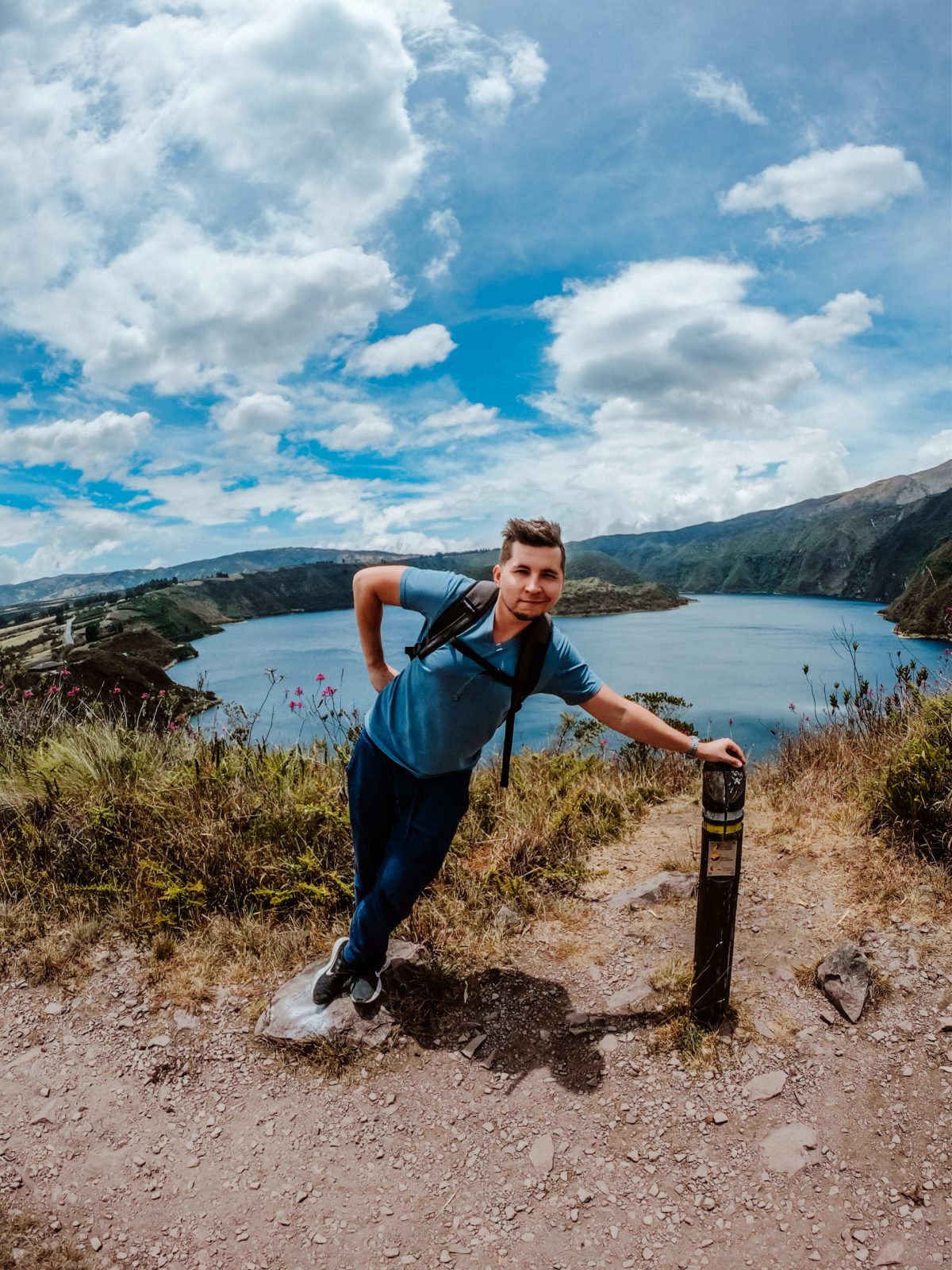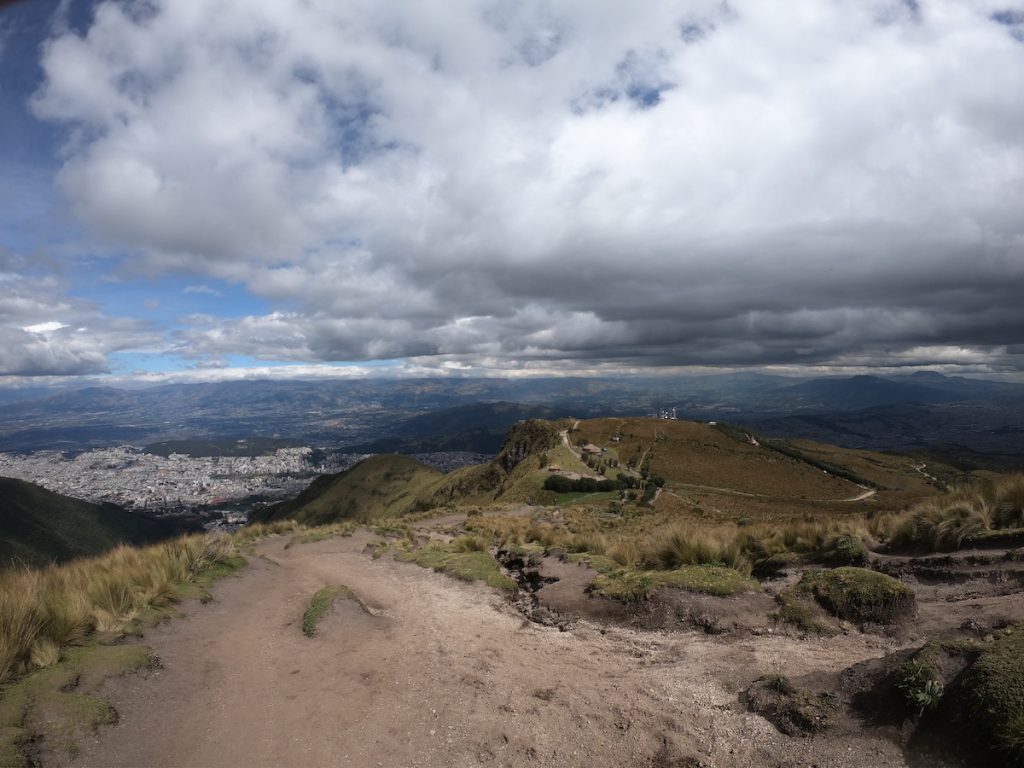Antisana Volcano, standing tall at 5,704 meters, is the fourth-highest volcano on Ecuador’s mainland. Located within the Antisana Reserve, it’s just a 55-kilometer drive from Quito, making it accessible for those seeking a high-altitude adventure.
This magnificent volcano features three peaks: one ancient cone heavily eroded by glaciers and calderas, along with two younger cones. The only recorded historical eruption occurred between 1801 and 1802, when the summit released a dramatic lava flow.
If you’re planning to tackle one of Ecuador’s highest peaks, this guide will help you prepare for your adventurous climb!
Looking back, climbing Antisana required careful planning – from altitude acclimatization to choosing the right season and gear. Skip the uncertainty I faced and get a FREE personalized Ecuador mountaineering quote from my trusted local experts who know exactly how to prepare you for this challenging climb. Your booking helps support both this blog and local Ecuadorian communities.
Plan perfect trip to Ecuador & Galapagos
I spent countless hours researching everything about traveling to Ecuador, and I created this blog for fellow travel enthusiasts who want the best, most reliable information. But if you want to save time, we’ve partnered with the top local agency to plan your dream trip.
How to Get to Antisana Volcano
The Antisana Reserve is nestled in Napo Province, about 55 kilometers southeast of Quito. Getting there involves a two-hour drive to the town of Pintag, followed by another two hours to reach the camping area, which sits at an impressive elevation of 4,500 meters.
Since there are no buses servicing Reserva Antisana, access is only possible by private vehicle. The route is straightforward: take the Quito-Sangolquí-Pintag road, then from the town square in Pintag, follow the signs to Antisana.
For our journey, we drove from Quito to Pintag in about two hours, then continued for another two hours to the campsite. If you’d prefer a hassle-free experience, several tour companies offer organized trips to Antisana Reserve, making it easy to include in your Ecuador itinerary.
Climbing The Antisana Volcano
How Long is the Climb to the Summit of Antisana Volcano?
The climb up Antisana is known to be technically challenging and requires prior mountaineering training and experience. The ascent typically takes around 6 to 8 hours, while the descent is much quicker, usually only about 3 hours.
One of the most stunning moments is at dawn when the first light reflects off the volcano and the lakes scattered around the reserve. On clear days, you might even catch views of other iconic volcanoes like Cotopaxi, the Illinizas, and Chimborazo. Unfortunately, during our climb, we weren’t as lucky—the clouds obscured much of the view. Still, the sense of being surrounded by such majestic peaks made the journey unforgettable.
How to Prepare Before Climbing Antisana Volcano
We are sharing some pointers and reminders below to help you in preparation for your Antisana climb.
Antisana Elevation
The Antisana Reserve spans a wide range of elevations, from 1,400 meters up to 5,758 meters at the peak of Antisana Volcano. At such high altitudes, most visitors will immediately notice the thinner air. Your lungs have to work harder, and you’ll likely feel your heart racing as your body adjusts to the reduced oxygen levels.
To better prepare for this, we highly recommend spending a few days acclimatizing in Quito or other Andean regions beforehand. This allows your body time to produce more red blood cells, helping to transport oxygen more efficiently when you’re climbing at higher altitudes.
In addition, it’s a good idea to adopt a special acclimatization diet three to four weeks before your climb. This can help your body adjust better to the altitude. We also suggest getting a medical check-up to ensure your heart is in good condition, especially if you plan to tackle such a demanding ascent.
Mountaineering Knowledge
Before attempting to climb Antisana Volcano, it’s highly recommended to undergo Ecuador Climbing and Glacier training. This course provides essential skills for safely navigating the challenging terrain. Under the guidance of a certified instructor, you’ll train on an ice wall and glacier, all within the strictest safety conditions. This preparation can make a significant difference, especially given Antisana’s technical ascent and unpredictable conditions. Proper training ensures you’re better equipped to handle the icy slopes and crevasses, making your climb safer and more enjoyable.
Prepare Your Climbing Gear
In addition to your technical mountaineering gear, it’s essential to pack the right clothing for Antisana’s harsh conditions. We highly recommend bringing rain gear, along with heavy layers to keep you warm. Don’t forget cold-weather accessories like gloves and a wool cap to protect against the freezing winds.
A sturdy pair of walking boots is a must for tackling the rugged terrain. Even on cloudy days, sunglasses and high-factor sunscreen are crucial to prevent sunburn, as UV rays can be intense at high altitudes. Lastly, be sure to carry plenty of water and energy-rich foods to stay hydrated and fueled throughout the climb. Being well-prepared can make all the difference on this challenging ascent.
Weather in Antisana
The weather at high altitudes in the Andes, especially in the Antisana Reserve, can be both chilly and unpredictable. The average temperature hovers around 5 degrees Celsius, with daytime highs reaching up to 15 degrees and nighttime lows dropping to -1 degree.
Visitors should be prepared for all four seasons in one day. The sun can be surprisingly intense when it shines, but a biting wind and a good chance of rain—or even freezing hail—are common. While these conditions might sound harsh, they actually contribute to the unique flora and fauna that make this ecosystem so rich and rewarding for travelers. The ever-changing weather adds a sense of adventure to the experience and highlights the resilience of the plants and animals that call this rugged landscape home.
Trust me, whether you’re an experienced climber ready to tackle the summit or a nature lover wanting to explore the reserve, Antisana offers something special! Want a safely planned adventure tailored to your skill level? Get a FREE expert itinerary from my recommended local agency who can help prepare you for this unique experience. Your booking supports this blog and local Ecuadorian businesses.
Best Time to Climb Antisana Volcano
The best time to visit Antisana Reserve and attempt a climb up Antisana Volcano is during the dry season, which runs from mid-November to mid-March. While this period offers more stable weather, it’s still worth noting that the volcano is often shrouded in clouds, so clear views are never guaranteed.
From April to September, the area tends to get quite windy, making the climb more challenging. It’s generally not recommended to climb between April to May and again from mid-September to early November, as these months bring unpredictable weather that can increase the risks during your ascent. Planning your trip during the optimal window is key to having a safer and more enjoyable experience.

Planning trip to Ecuador?
My wife and I rented a car for 15 days and traveled from the northern part of Ecuador to the south, visiting amazing cities like Quito, Otavalo, Baños, Cuenca, and Guayaquil. Along the way, we explored iconic places such as Cotopaxi National Park, Quilotoa Lake, and many more breathtaking destinations.
Not many blogs cover traveling in Ecuador in detail, so I spent nearly three weeks creating this comprehensive Ecuador travel guide based on our trip. It’s packed with everything you need to know, and honestly, I consider it the best free travel guide about Ecuador out there.
If you’re planning a trip to Ecuador, don’t forget to use my link for discounted hotel prices through Booking.com. It’s a great way to support my blog while saving money on your accommodations!
Bottom Line
For those who thrive on adventure and challenges, reaching the summit of Antisana Volcano is an experience like no other. The thrill of the climb and the breathtaking views make it truly rewarding.
Have questions about your upcoming Galapagos trip? Join my Galapagos Reddit community and ask other travelers who recently visited the islands. Get up-to-date tips, real experiences, and honest advice from other travelers (I ban tour agencies and resellers).
But even if mountaineering isn’t your thing, the Antisana Reserve is still well worth a visit. Its untouched beauty and grandeur offer a glimpse into one of Ecuador’s least-explored natural reserves. Whether you’re hiking through its diverse landscapes or simply soaking in the panoramic views, there’s something here for every nature lover to appreciate.
Plan perfect trip to Ecuador & Galapagos
I spent countless hours researching everything about traveling to Ecuador, and I created this blog for fellow travel enthusiasts who want the best, most reliable information. But if you want to save time, we’ve partnered with the top local agency to plan your dream trip.



